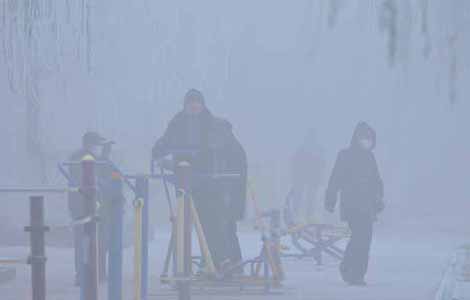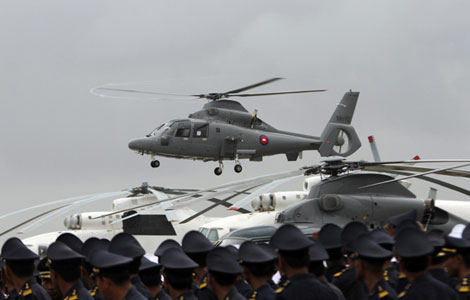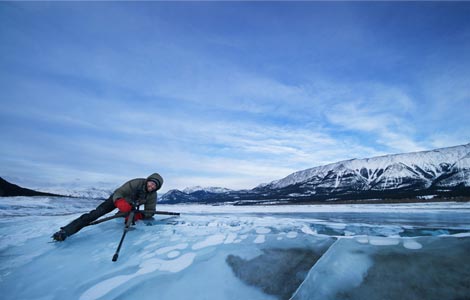Air zone said not to affect routine flights
Updated: 2013-11-27 08:21
By Chen Weihua in Washington and Pu Zhendong in Beijing (China Daily USA)
|
||||||||
"Submitting flight plans will help minimize miscalculation. The new rules, mostly applicable to hostile and abnormal flight cases, will not affect any normal operations of international flights," said Wang Ji, a Beijing-based military expert.
"In addition to safeguarding China's sovereignty and airspace safety, the zone will help identify dangerous factors and avoid aviation chaos, given the high tensions and sensitivities in the region," Wang said.
Xing Hongbo, another Beijing-based military and legal expert, said that although the zone differs from territorial airspace, it is still international practice for a foreign aircraft to report its identity, location and flight plan.
"Theoretically, airlines that refuse to submit information to China may be rejected entry," Xing said.
Japan established its air defense identification zone in 1969, and has since expanded the zone several times, so that it now encompasses three-quarters of the airspace over the East China Sea. In past years, Japan also used its ADIZ as a pretext to report so-called Chinese intrusions.
Xing said Tokyo should not make a fuss and apply double standards to this issue, which would further complicate current frayed relations.
"It requires a sincere and tolerant attitude from the Japanese government to maintain order and stability in the region," he said.
Beijing announced on Saturday the establishment of its first ADIZ over the East China Sea while presenting a diagram of its range and issuing related aircraft identification rules.
The Chinese defense zone covers the Diaoyu Islands. The zone overlaps Japan's ADIZ and also covers the US military's training area in the East China Sea.
According to the aircraft identification rules, China will take timely measures to deal with air threats and unidentified flights, including identification, monitoring and disposition.
Since 1950, more than 20 countries, including the US, Canada and Australia, have set up ADIZs beyond their sovereign airspace.
- Japanese carriers adhere to China's air zone
- US urged to correct mistakes on China's air zone
- Japan's remarks on China's air zone 'unacceptable'
- China's setup of air zone legitimate, conducive to regional peace
- Beijing rejects air defense zone accusations
- S Korea to discuss with China over air defense zone
- China's new air defense zone is in line with global practice: experts
- Air defense zone accords with intl practices: experts
Most Viewed
Editor's Picks

|

|

|

|

|

|
Today's Top News
Brooklyn, Shanghai hook up
EU demands protection against US surveillance
Air zone 'not to affect routine flights'
China, Romania call ties 'exemplary'
First Web anti-monopoly lawsuit begins trial
Qualcomm in anti-monopoly probe
US troops pullout in Afghanistan
Li looks to closer relations
US Weekly

|

|













